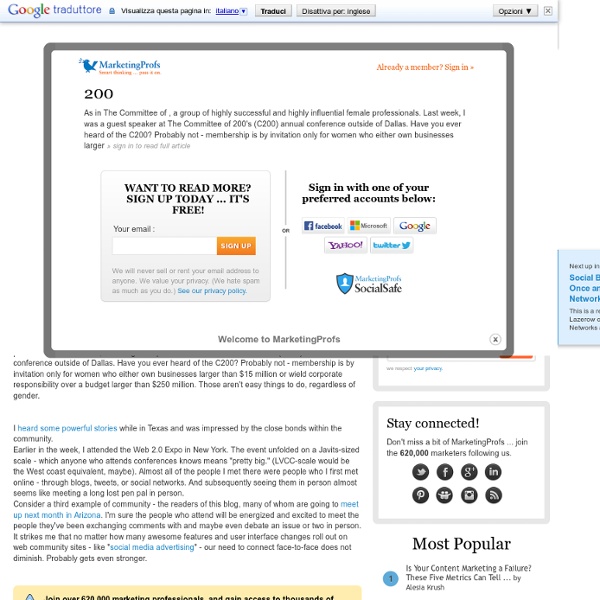



Web Text Editor KDPaine's PR Measurement Blog: Measuring Engagement is just another term for Measuring Relationships I was asked over the weekend to comment on Jason Fall's post on measuring engagement and it got me thinking. The reason that engagement is so important to today's marketers, and why everyone, is trying to figure out how to measure it, is that engagement is essentially the first step in building a relationship between your customers and your brand. And in this era of drive by flaming and overwhelming inundation of data and messages, an organization's relationship are what will differentiate it from everyone else. If I'm managing communications for the USO and my ultimate goal is to increase donations, I know that somehow I need to form a relationship with a potential donor if I'm ever going to have a prayer of getting him or her to give me money. For those of you familiar with Grunig's relationship theory, at this point the relationship is pretty much pure exchange. But let's assume that Veronica has won the prize, or is interested in the content the USO is sending her. Commitment
Measuring Your Twitter Network’s Health by John Haydon (follow him at @johnhaydon) from Corporate Dollar It’s not about you. I know, sounds cold but it’s true. It’s really not about you. But in some ways, it’s not about them either. In many ways it’s about your 2nd and even 3rd degree network – the folks who follow your followers. It’s all about reach. “But I have 7,357 followers on Twitter! Maybe. Like my junk? What’s powerful about Twitter is the potential for your message to be exposed to thousands of folks way beyond your immediate connections. 1. Twinfluence will show you four useful measurements of your Twitter network: Second-Order Network: The number of folks that follow your followers. Velocity: The average number of followers and second-order followers attracted per day is velocity. Social Capital: The degree to which your followers have a high number of followers themselves determines your social capital. Centralization: This indicates the degree to which you converse with a only a few other users. 2.
Fuel Your Writing PR Strategies In A Recession Instead of describing the problems associated with the recession, try explaining what you are doing to succeed despite or because of the recession. Falling stock prices, unemployment, bankruptcy, and a depressed housing market; all signs that the economy is tanking. Bloggers and journalists are writing articles that describe the downturn, and thinking of new content strategies that address the recession because the downturn is the current concern of most people. “How will professional bloggers survive the recession?” “How to survive the recession” Tales of the downturn, while important for understanding what is happening don't give customers a good reason to buy, just the opposite, customers become even more conservative, preferring to watch and wait. Rather than concentrating on the downturn, look for ways you can help people and companies succeed.
regator.com - a bite of the blogosphere's best Roots PR Top 10 Blogs for Writers – 2007/2008 By Michael Stelzner The nominations flooded in for our second annual contest. We were very pleased to see that blogs dedicated to writing have grown substantially. The nominees have been carefully examined, with the greatest weight on the quality of their content. What follows are the top 10 blogs for writers. Copyblogger, by Brian Clark: Holding the number-one spot for the second year running, this site excels at teaching the art of writing.Freelance Writing Jobs, by Deborah Ng: For writers seeking new work, this site is your sole destination and maintains a top spot in our contest from last year.The Renegade Writer, by Linda Formichelli and Dianna Burell: Are you a freelance journalist looking for inspiration? Congratulations to the winners. The badge of distinction: If you are a winner, feel free to post the image you see here on your blog and please link back to this page. [ratings]
I always look forward to the end of the year. Not only is it a great time to look back at all of the good things that happened during the past year, but it’s also a great time to look at your mistakes. I also love to look at the mistakes of others: so I don’t make the same mistakes. Every year Fineman PR puts out their list of the top public relations blunders. I’ve posted this for the past few years and last year I posted their top 10 public relations blunders and it was a big hit. So, here is this year’s list, the top ten public relations blunders of 2009. 1. 2. 3. 4. 5. 6. 7. 8. 9. 10.
Write Online with Confidence | Find Your Writing Voice through Blogging and Social Media Horn Group, Inc. > Blog > Is Social Media Killing PR? I'm not sure which of the famous posts--Scoble, Arrington, Calacanis--and the responses from Steve Rubel, Brian Solis and others, planted the seed. Several of us were sitting in an office one day talking about where PR is going, and the fact that in all the noise about the so-called death of PR, no one really talks in an open, live forum about where this industry is actually headed. And then Jeremiah Owyang put up his heal thyself post, and Dee Anna discussed it with him at an event, following up with an open invitation to bloggers to come see us at work. We originally conceived it as a sort of smackdown in which we get at the tensions between PR, media and bloggers, but we knew that'd be over-simplistic and limiting. We wanted to get past all that to what the new media ecosystem will look like. Does social media make PR irrelevant? And that makes some people very, very uncomfortable. So that means is time to, as one of my colleagues is fond of saying, put on our big-girl pants and deal.